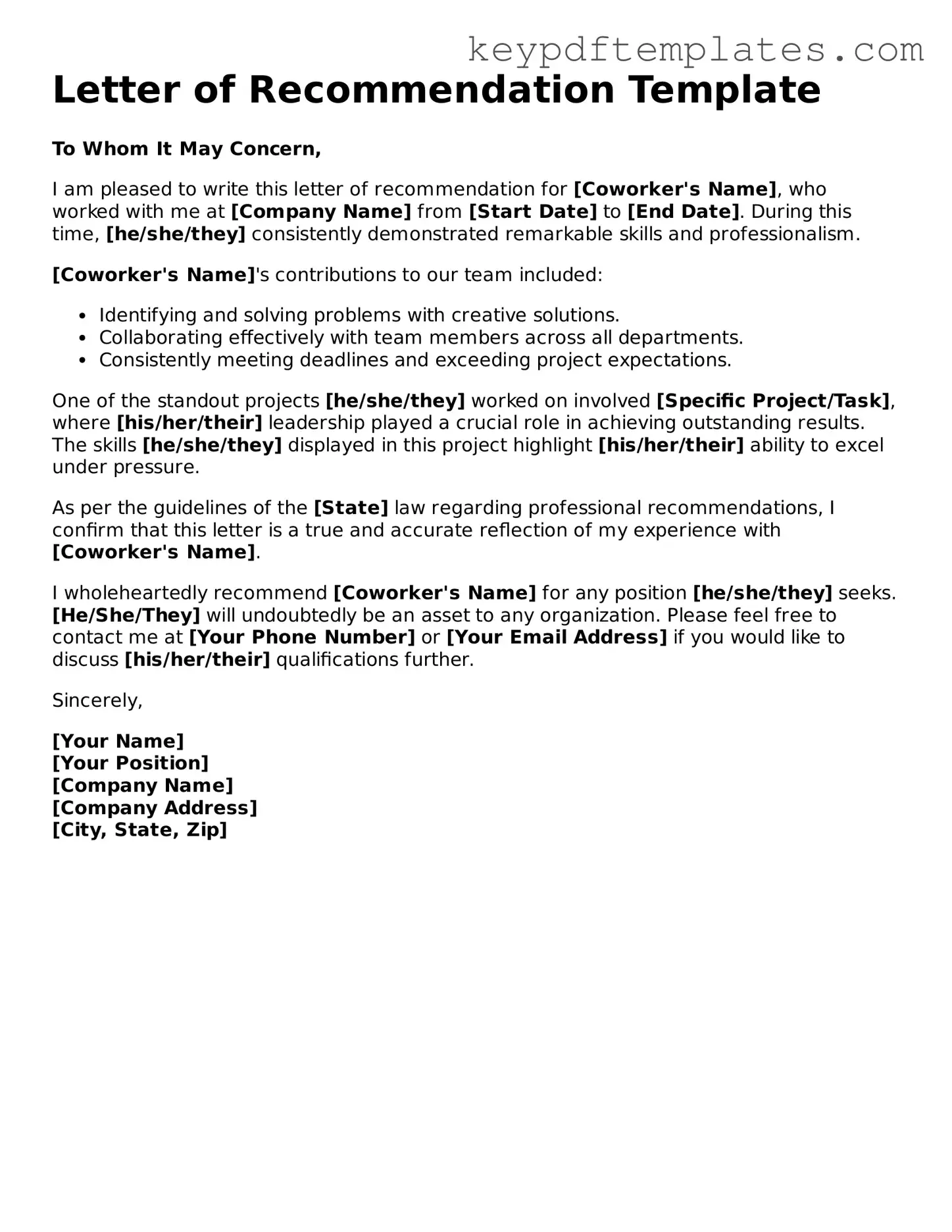Printable Letter of Recommendation for Coworker Template
A Letter of Recommendation for Coworker form is a document used to endorse a colleague's skills, work ethic, and contributions in a professional setting. This form serves as a valuable tool for employees seeking new opportunities or promotions. By providing a structured way to highlight an individual’s strengths, it can significantly impact their career advancement.
Modify Document Online
